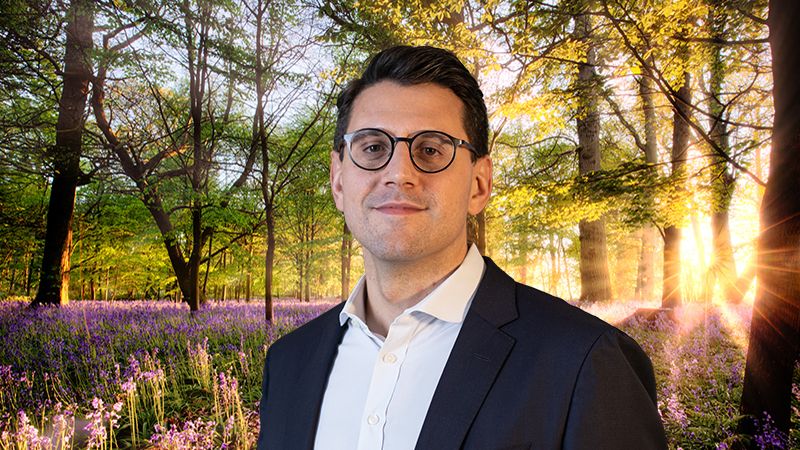In this new series for PA Future, as we enter spring, we ask senior members of the responsible investment industry about what the next iteration of ESG looks like, to share their fresh additions to portfolios and what they would like to see emerge from regulators.
Andrea Carzana, senior portfolio manager and head of sustainable equities, Aviva Investors, shares what clients are asking now, why we do not need constantly changing regulation and reflects on widening wealth gaps in history.
The first quarter of 2024 has seen industry spokespeople talk about the next iteration of ESG or how ‘ESG is growing up’. What’s your take on this? What is key for the next evolution in this space?
It is true that the ESG investment landscape has undergone a significant evolution over recent years, and we would cite the last six months as a period where the speed of these developments has accelerated. Prior to the Covid pandemic the market clearly held significant interest in the concept of ESG and, in particular, how funds in this space could potentially provide a financial solution to tackling some of societies greatest challenges, namely climate change. However, there was less of a focus on the financial fundamentals, and how these products can generate positive returns.
This has completely changed within the current landscape. Following challenging years for ESG products across 2022 and 2023, one of the first questions prospective investors now ask is: “How will this product return over the medium-term?”
Climate change will have a massive impact on financial markets over the coming decades, and that investing in accordance with this can be an alpha driver, but this needs to be clearly demonstrated through data and reporting. In the current environment, products that fail to do this to a high level will likely become outdated very quickly.
What was the most recent new investment/addition to your portfolio?
We invest in both solutions and transition companies when it comes to the portfolio, with the latter category being a key differentiator for us. We ask these companies to continue doing what they’re doing but will a view to adapting, or “transition”, their practices to get ready for a net-zero environment.
Our latest portfolio adjustment was a good example of this, as we recently invested in Lonza: a Swiss-based supplier to the pharmaceuticals industry. We see Lonza as an attractive route to investing in the ongoing shift in the pharmaceutical industry away from developing and manufacturing simple molecules to more complex biologics. As biologics are much more challenging drugs to manufacture than small molecules – think of them as like building a car rather than a bicycle – there is an increasing desire from pharmaceutical companies to outsource manufacturing, resulting in a sustainable and predictable book of business for industry leaders such as Lonza.
Given that producing biologic drugs uses a lot of electricity, it is critical for Lonza to transition their business model to become carbon neutral. First, the reduction in future power costs can enhance what we expect to be an already attractive return profile for the business. However, we also believe these developments could be a growth driver for the business, with pharmaceutical companies seeking to improve their own climate credentials by awarding orders to firms that can produce drugs within a net-zero environment. As a result, we would see Lonza as a great example of a business that will benefit financial from shifting to more sustainable practices.
Which new themes are you exploring in portfolios?
One theme we have been looking at is around power efficiency for generative AI. Data centres that enable this technology use around four times the amount of energy that a traditional data centre would require for operation. As such, finding solutions to this challenge would not only reduce cost, act as a significant alpha driver, but would also lead to a significant emissions reduction.
As such, we are looking at heating ventilation companies (or HVACs) that have the technology to cool down these new generation servers that can run at significantly high temperatures. Given the vast growth we are seeing with regards to artificial intelligence, we believe demand for solutions in this space will only increase over the coming decade, and grant businesses in this area increased pricing power.
It has been said many times that the industry is just at the beginning of ESG regulation. What else would you like to see?
Our key request from ESG regulation is simple: that it is always clear and consistent. While ESG as a theme is continuing to evolve at a fast pace, a constant change in regulations can lead to confusion among the industry. As such, any new regulation must be forward looking and future-proofed to ensure that it does not require significant amendments within a matter of years.
Spring is a time for new beginnings. What are you looking at with a fresh perspective in your personal or work life, and why?
A fresh perspective I have been considering over the past few weeks and months is the importance of history. As Mark Twain once said: “History doesn’t repeat itself, but it often rhymes,” and a lot of knowledge about our current world can be gained by studying the past. I have recently been reading the book Principles for dealing with the changing world order by Ray Dalio, in which he analyses historical empires, and identifies the key indicators for their successes and failures. I’ve found this an interesting read, especially the conclusion that questions whether the age we are living through is really as unique as we deem it to be, or whether much of this has happened in the past. A key example is seen the rise of populism following the GFC in 2008, as this is a trend that has occurred on numerous occasions previously where there has been a growth in the wealth gap, most notably in Germany prior to the onset of World War II.








